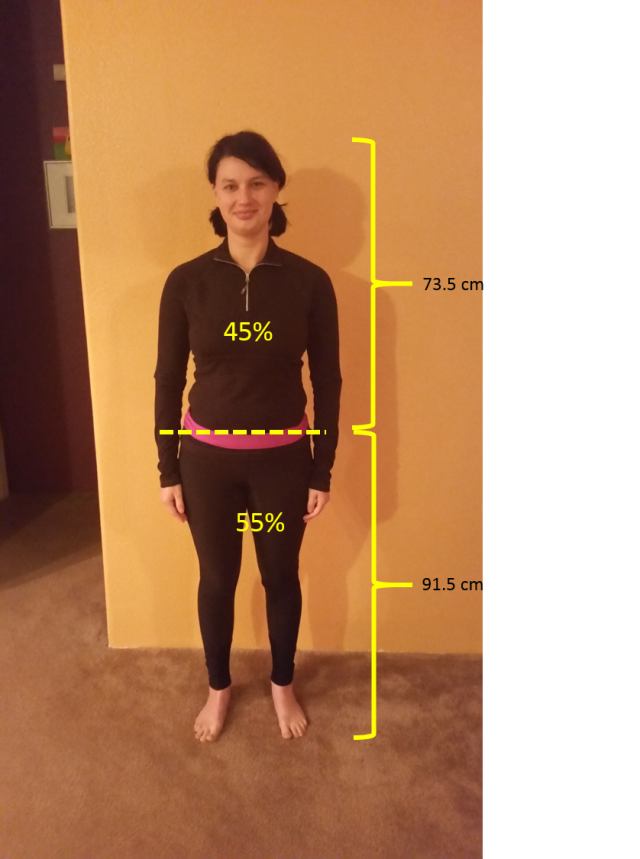
Back to Basics: Human Conformation
We analyze our horses’ conformation … why not our own?
Riders sometimes have these crazy double standards. We are willing to pick our horses apart piece by piece to determine strengths and weaknesses to devise a plan of attack to make improvements. Now ask yourself this: how often do we do this to ourselves? Pretty much never, right?
Well, I have this rule where I won’t submit my horses to anything to which I won’t also submit myself. Just like horses, there is an ideal conformation for a rider, and just like horses, there are strategies to make those with less-than-ideal conformations highly effective in the saddle. I think that people frequently use a one-size-fits-all training program for horses and people. While certain concepts are universally true, treating each horse and each person as an individual is key for success.
Today I’m going to objectively examine my own conformation to determine strengths, weaknesses, and a strategy for improvement. Let’s just start off with a little disclaimer:
Disclaimer: This article has nothing to do with whether or not we should feel good about our bodies and how we look. It is only about maximizing our own potential by properly strategizing a training plan based around our particular body. All the citizens of Horse Nation look super hot in their boots and breeches (or in their Justin’s and jeans), so don’t even worry about it.
First, here is one of my biggest pet peeves:
This is conformation:
This is confirmation:
Okay. So now that we’ve cleared that up, let’s look at my conformation.
I’d say the most important aspect of rider conformation is the leg-to-torso ratio. A high leg-to-torso ratio is favorable for a rider because it makes for a body shape that is more innately stable in the saddle.
So we want long legs, and while my legs aren’t runway-model long, they’re not bad. I’m 55% leg and 45% torso, so naturally, I am pretty secure in the saddle without having to work too hard at it. For a long time, being secure in the saddle was my only talent as a rider BECAUSE I didn’t have to work too hard it.
I’d like to note that these percentages are based on length and not weight. Determining these percentages by weight would the most accurate approach, but since I’m not quite ready to donate my body to science, and I couldn’t find a magician capable of slicing me down the middle and weighing my two halves before putting me back together, I decided this was best option.
So if you are someone with shorter legs and a longer torso, that’s fine. You’ll just have to spend a bit more time working on core strength and balance. Despite a common misconception (because of certain anatomical feature us ladies possess; I believe the technical term is ta-tas), men are more likely to be top-heavy than women.
The next piece of my conformation we are going to look at is the longitudinal (up and down) shape of my spine. While in horses a rounded spine is preferred, in people we look for what is called a neutral spine. A neutral spine occurs when the top of the pelvis sits level, and there is extension upwards from the top of the head while remaining relaxed through the shoulders. This is where I struggle. I am a chronic booty toocher as you can see by the exaggerated arch in my spine. Because my posture is something I struggle with so much, I have sought professional help in the form of private pilates classes. This is something I highly recommend even for just one or two classes. It wasn’t until someone physically positioned me correctly in a neutral spine that I realized just how out-of-whack my posture is.
Lastly, we’re going to look at the lateral (left to right) alignment of my spine. As you can see in the picture below, I lean left, and I don’t mean politically (Helix and I are both proud members of the Cocktail Party).
Correct lateral alignment is achieved when the spine is perpendicular to the ground. My crookedness is the result of injuries that have caused me to carry myself in a less than balanced way. Luckily the root cause of my crooked nature seems to be uneven muscling, so I should be able to make some improvements.
So after examining a few key aspects of my conformation, we have learned that my greatest strength (based solely on the shape of my body) is stability, but I need to work on both longitudinal and lateral alignment of my spine.
I encourage anyone who is serious about riding to take an objective look at his or her conformation (while chanting “I am hot. I am hot.”). This is not an exercise to define your limits, but an exercise to identify tools and strategies you can use to shine.
Go riding!
Biz is the author of Horse Nation’s “Back to Basics” series, which follow the journey of a “somewhat ordinary” horse and rider pair as they strive for greatness. Catch up on her past columns by clicking the #BACK TO BASICS at the top of the page.
Biz Stamm is a part-time seed scientist and full-time trainer/riding instructor specializing in starting young horses for sport horse disciplines. She brings the analytical mind she developed while working in a lab to her riding and teaching, emphasizing a thorough understanding of how the horse’s body works. She currently owns two horses: the Kalvin Cycle (Kalvin), a 9-year-old half-Arabian gelding, and DB’s Alpha Helix (Helix), a 4-year-old Kiger mustang gelding. While she is currently pursuing competitive goals, her main goal is to enjoy her horses, and for her horses to enjoy her.











Leave a Comment